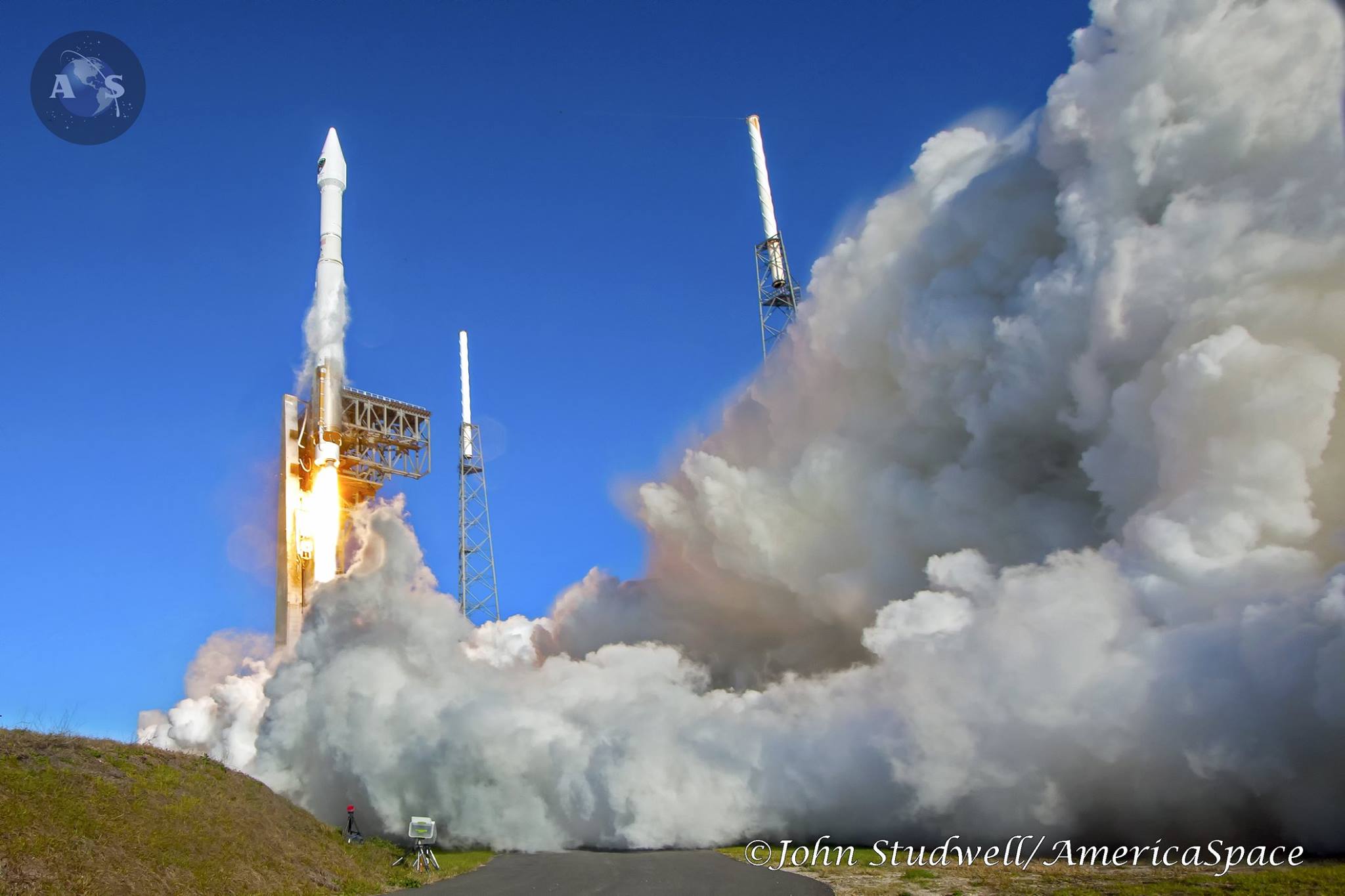
The successful Feb. 5 United Launch Alliance (ULA) launch of the USAF/Boeing GPS IIF-12 satellite commemorates the 100th anniversary of Boeing aerospace and the 16 years of USAF/contractor teamwork it has taken to launch all 12 GPS 2F series spacecraft. Liftoff from Cape Canaveral’s Launch Complex 41 of the 196-foot-tall Atlas-V 401 rocket, with no solid rocket boosters, occurred at 8:38 a.m. EST, at the opening of a 19-minute launch window.
Powered by 860,000 lbs. of thrust from its Russian Energomash RD-180 engine, the Atlas flew northeast into clear skies directly up the U.S. Atlantic seaboard on an azimuth of 45.8 degrees before arching eastward over St. John’s, Newfoundland.
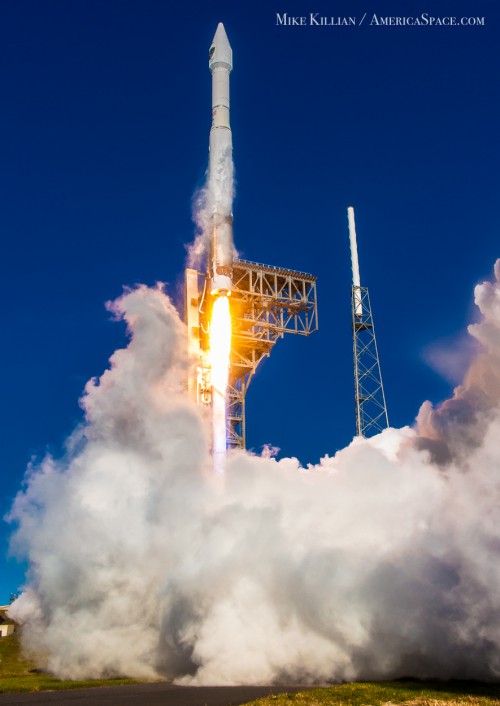
“We began launching the IIF satellites in May 2010 and have appreciated the outstanding teamwork of everyone involved as we have worked together to deliver all 12 IIF satellites, said Laura Maginnis, ULA vice president, Custom Services. “This system provides incredible capabilities to our women and men in uniform while enabling so many technologies that impact all of our daily lives. We are proud to be GPS’s ride to space.”
The mission marks the end of an era for the GPS IIF program with seven GPS IIF launches in just over 21 months, “a momentous achievement in GPS history,” according to USAF Col. Steve Whitney, director of the GPS Directorate at the Space and Missile Systems Center (SMC) at Los Angeles AFB, Calif.
“I can think of no better way to begin Boeing’s 100th year in Aerospace. than with the launch of GPS IIF-12,” said Mark Smith, Boeing GPS IIF deputy program manager. As many as 15 ULA Atlas V and Delta IV missions total are planned this year from the Cape and Vandenberg AFB, Calif.
Boeing has been working on GPS spacecraft systems for 40 of those 100 years, said Dan Hart vice president of Government and Space Systems for Boeing’s Space and Intelligence Systems Division.
The IIF-12 flight marks the 72nd GPS satellite delivered to orbit since 1978, and the 60th operational GPS to launch on a ULA or heritage family rocket.
At 4 minutes, 4 seconds after liftoff, the RD-180 shutdown occurred at 62 miles altitude at a velocity of 16,000 mph. The first stage separation was followed by the first ignition of the second stage Centaur’s Aerojet Rocketdyne RL10C engine, generating 22,900-lbs. thrust. That critical firing lasted about 13 minutes until cutoff over the mid-North Atlantic, which placed the vehicle in an initial 12,582 x 103 statute mile orbit.
“The placement of the next-generation 12-satellite GPS IIF constellation into orbit is now complete, providing critical navigational services to commercial and civilian users worldwide, as well as to the U.S. military, which depends on the satellites to keep troops and allied forces safe,” said Peter Cova, acting vice president of Space Launch Systems at Aerojet Rocketdyne. “We’re proud to know our propulsion—and the men and women at Aerojet Rocketdyne who designed and developed it—played a key role in making these enhanced navigation capabilities a reality for everyone who uses them.”
After coasting for 3 hours the Centaur was restarted for a roughly 87-second, second burn to elevate perigee. This was followed by release of the spacecraft into a 12,658 statute (11,047 naut.) mile orbit inclined 55 degrees to the equator at 3 hours, 23 minutes, as the spacecraft and Centaur flew south of Australia, near the French Dumont d’Urville Antarctic coastal station.
“This is an exciting time for Space and Missile Systems Center. The launch of the final GPS IIF satellite, culminates years of extraordinary teamwork and commitment to mission success,” said USAF Lt. Gen. Samuel Greaves, Space and Missile Systems Center’s commander and Air Force program officer for space.
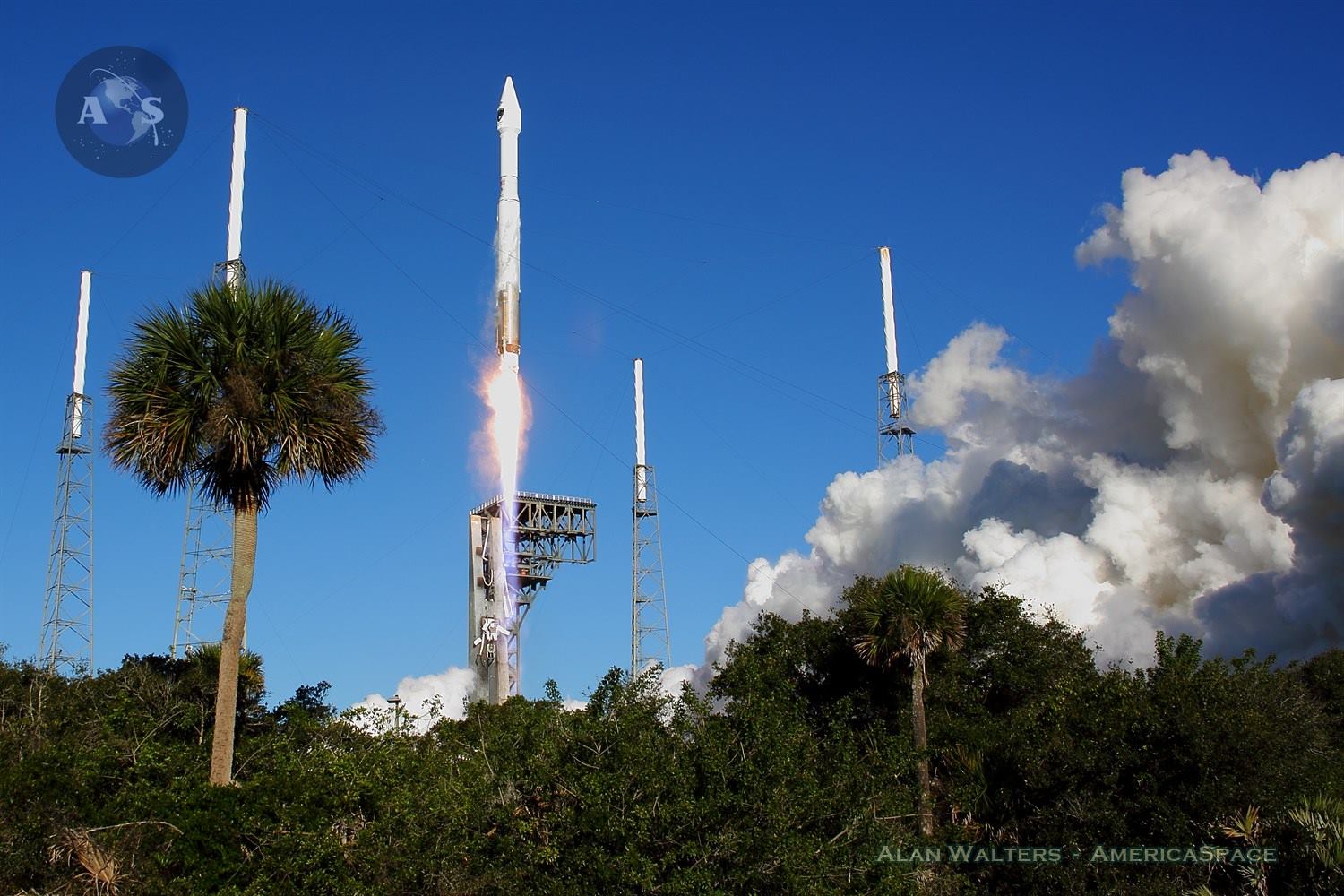
It’s also “a significant milestone for GPS,” he said. “The GPS IIF satellite [constellation] performance has been exceptional and is expected to be operational for years to come.” Greaves said.
While the new, much more capable Lockheed Martin GPS III series has been delayed until its first launch in 2017, the Boeing-built GPS IIF satellites “will continue to provide improved signals that enhance our precise global positioning, navigation and timing services,” the Air Force said.
The first GPS III has completed thermal vacuum and temperature tests at Lockheed Martin and is expected to be cleared to launch in August, but must await more fixes to its ground system and launch vehicle scheduling into 2017.
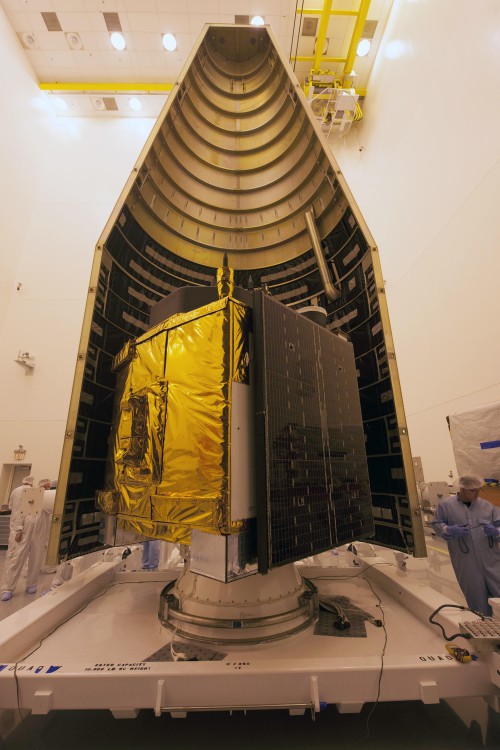
Compared with older, still operational GPS satellites, the GPS IIFs carry improved navigational accuracy through advanced atomic clocks, a longer design life than previous GPS satellites, a third operational civil signal (L5) that benefits commercial aviation and safety-of-life applications, and a more robust military signal.
The new satellite will bring the total number of spacecraft in the operational constellation to 31, said Whitney. There are six equally spaced orbital planes with four to five spacecraft in each plane in 55-degree orbits. Of these, 12 are IIF series satellites with 12-year design lives and 19 are older Lockheed Martin IIR and IIR-M spacecraft launched between 1997-2009, but significantly exceeding their 7.5-year design lifetimes.
Nine additional satellites are kept in a residual orbit, meaning the 2nd Space Control Squadron at Schriever AFB, Colo., and Boeing’s mission control facility in El Segundo, Calif., actually control 40 satellites around the clock.
Col. Whitney said that prior to introduction of the IIF version of GPS, the older constellation typically had a daily range error of about 1 meter (39 inches). But now with the full 2F series in place, the daily error will be more like 42 cm. (16.5 inches ), he said.
The cost of the IIF-12 satellite is $131 million, minus the cost of the launch vehicle which at about $114 million brings the total mission cost to about $245 million.
The 100 percent success rate of a dozen GPS IIF launch vehicles and 12 satellites results from extraordinary oversight by the government/industry team, stressed Dr. Walter Lauderdale, the USAF IIF-12 Mission Director at SMC.
For example, a late breaking aerospace industry alert on potential flaws in a type of electrical connector used in the Atlas V resulted in a two-day launch delay so technicians could inspect and review documentation to prove the vehicle’s connectors were good.
“In the overall hardware checkout leading up to the launch, the government team completed 117 hardware pedigree reviews and satellite and launcher data package reviews on an additional 320 hardware items,” said Lauderdale.
In addition, “Chief Engineer review boards dispositioned 50 issues since the successful GPS F-11 launched last fall,” said Lauderdale.
Also there were 196 launch vehicle verification tasks and 65 spacecraft-to-launch vehicle hardware verification tasks to ensure mission success for the IIF-12 launch and initial satellite operations, he said.
.
Be sure to “Like” AmericaSpace on Facebook and follow us on Twitter: @AmericaSpace
.
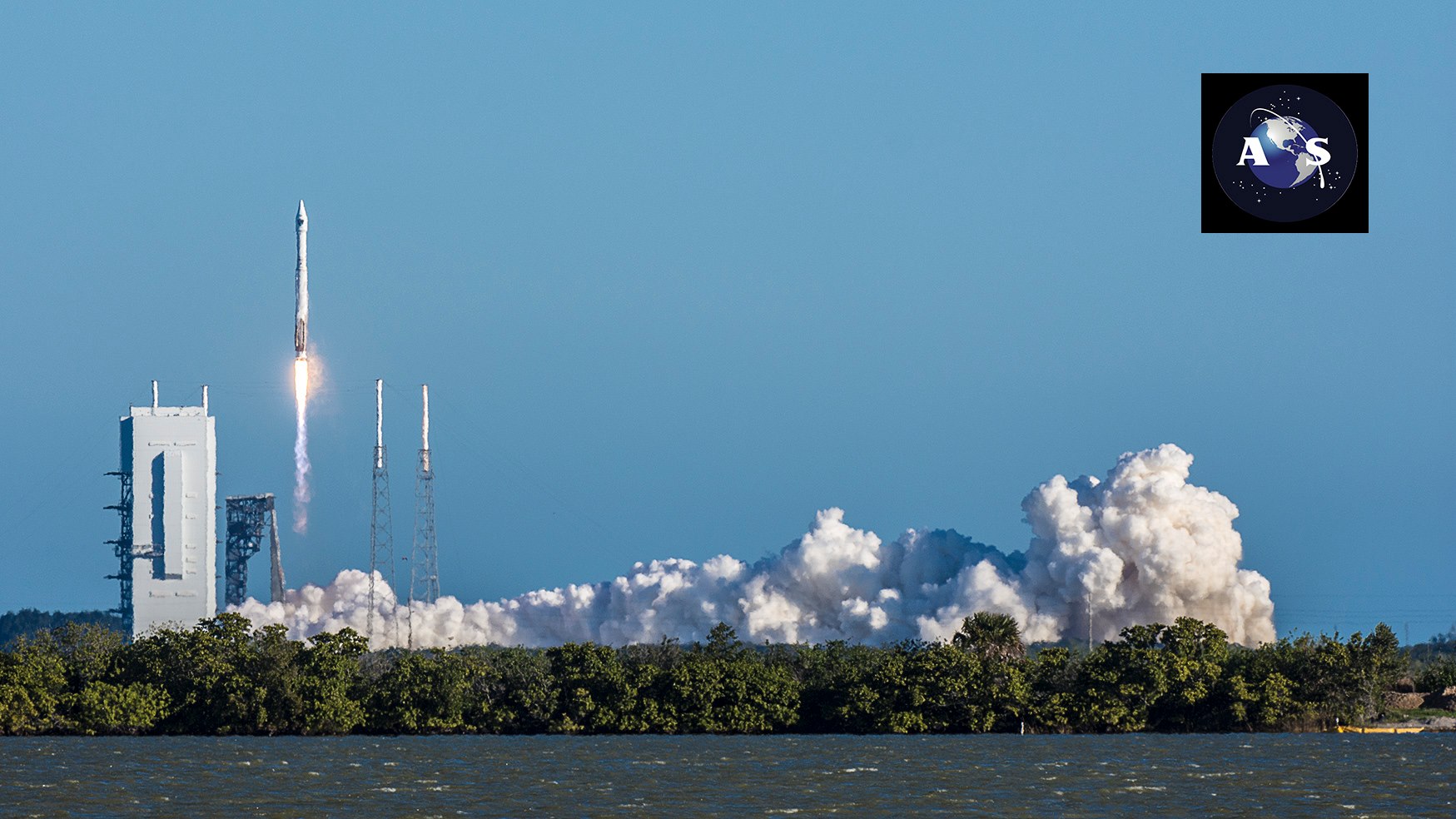


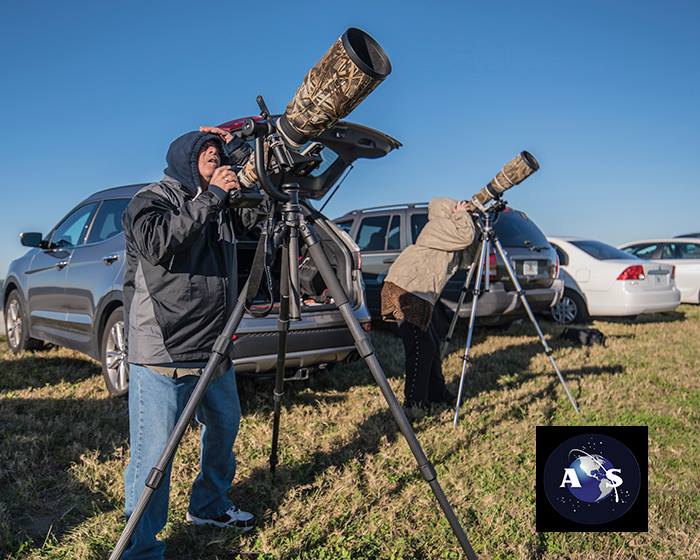
.
Missions » GPS » Missions » GPS » GPS IIF-12 »




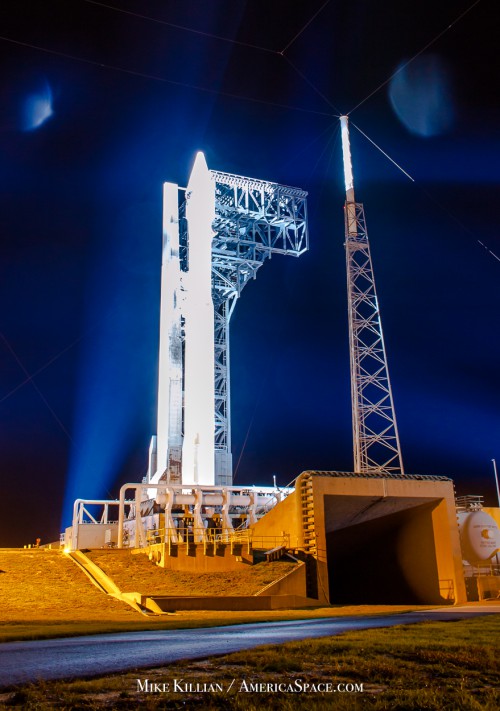
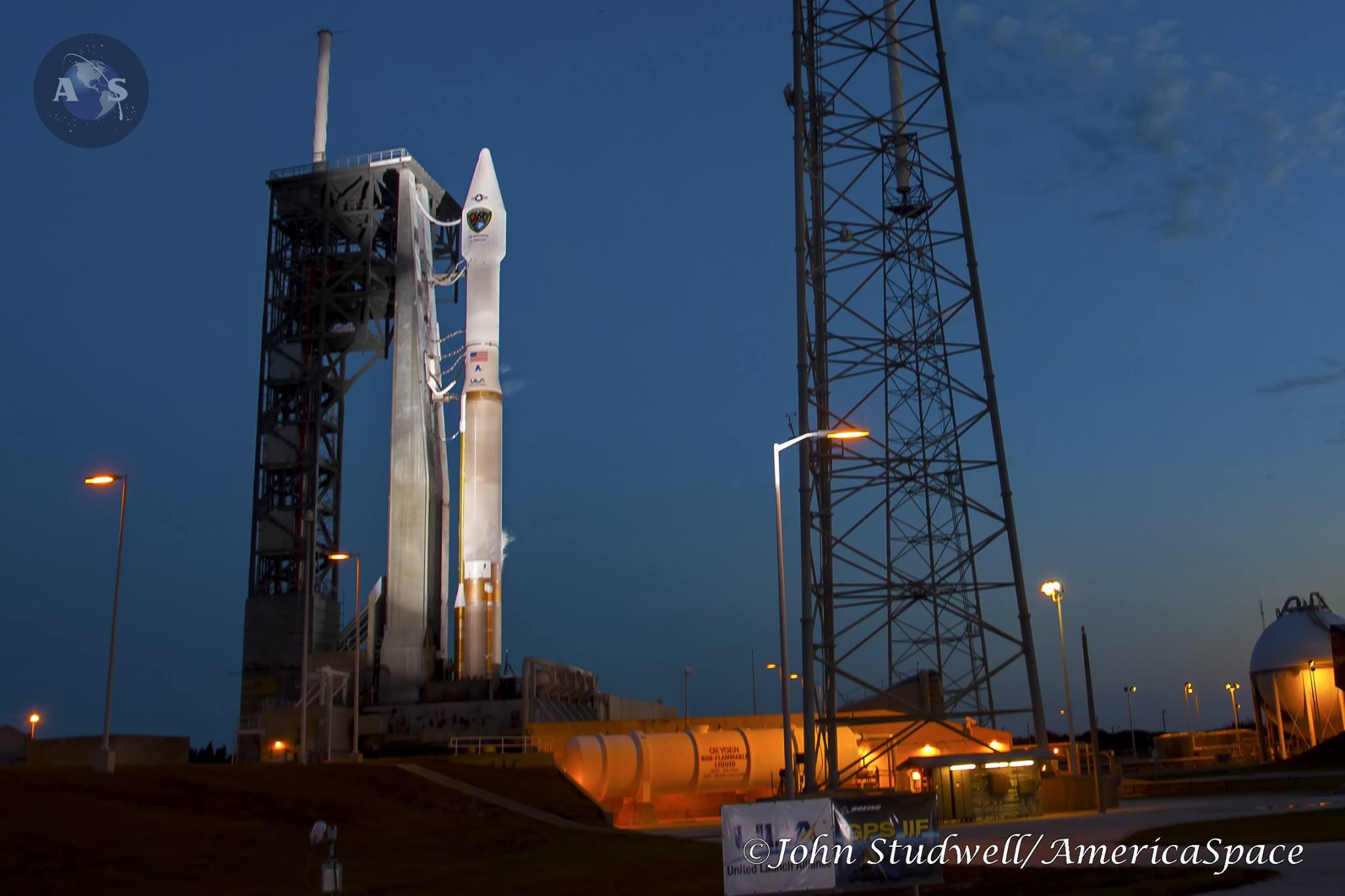
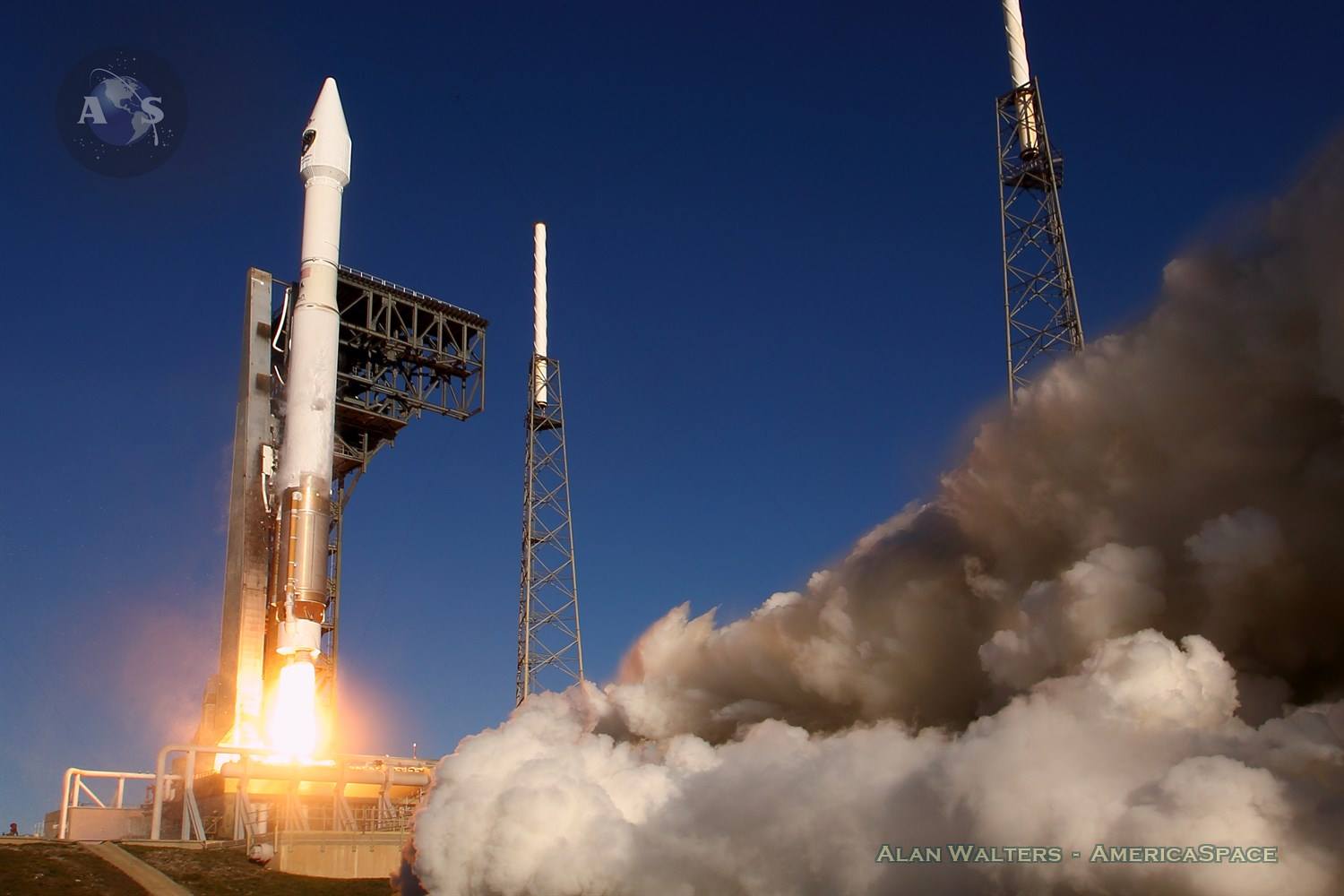
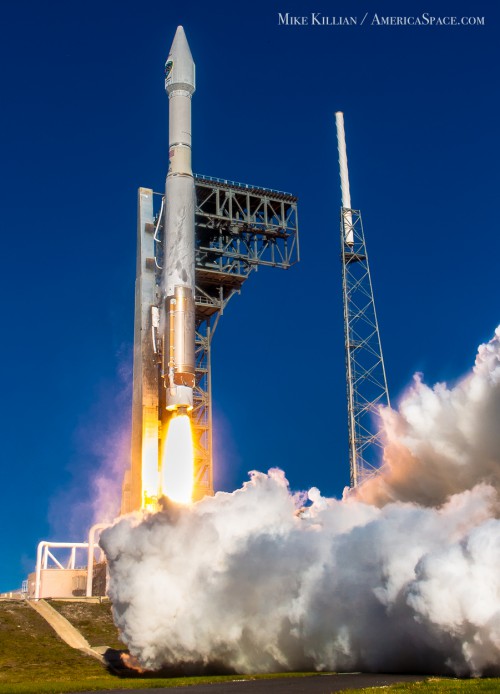
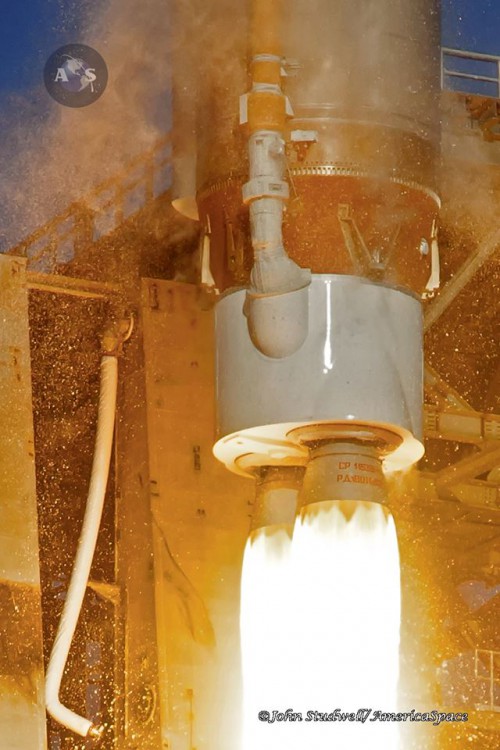
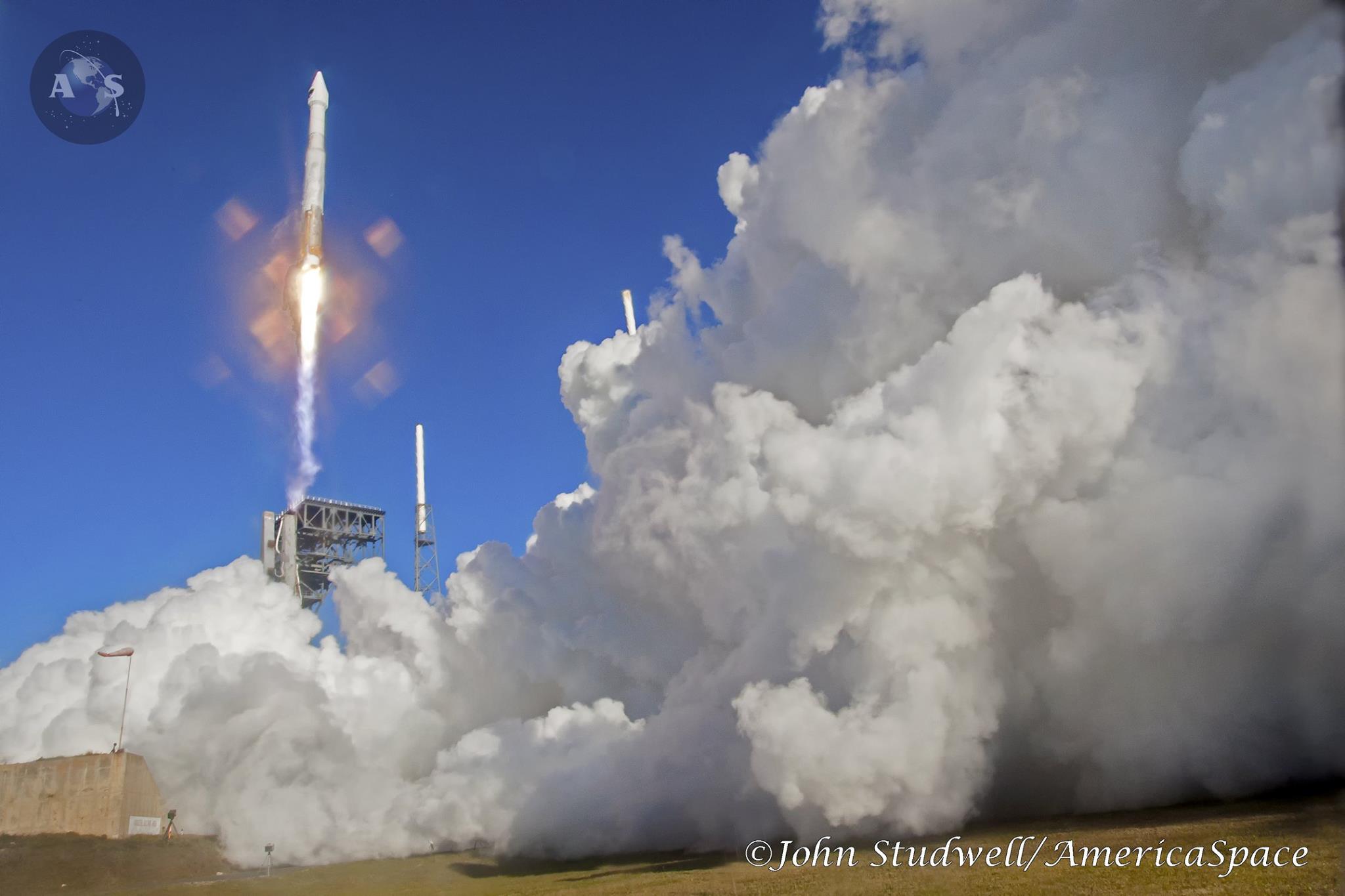
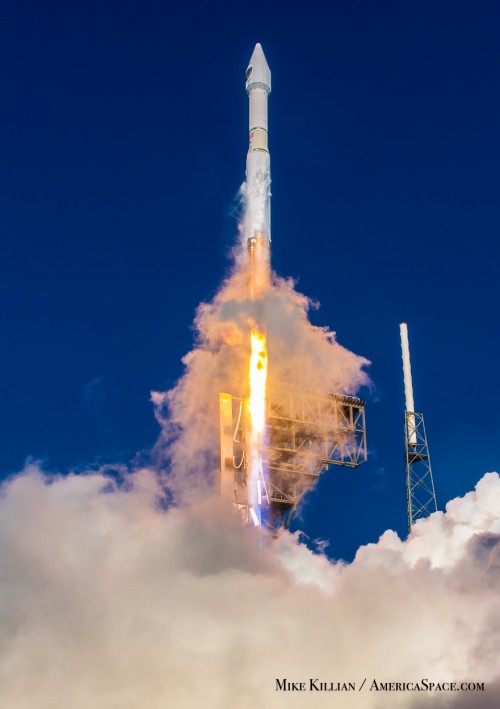
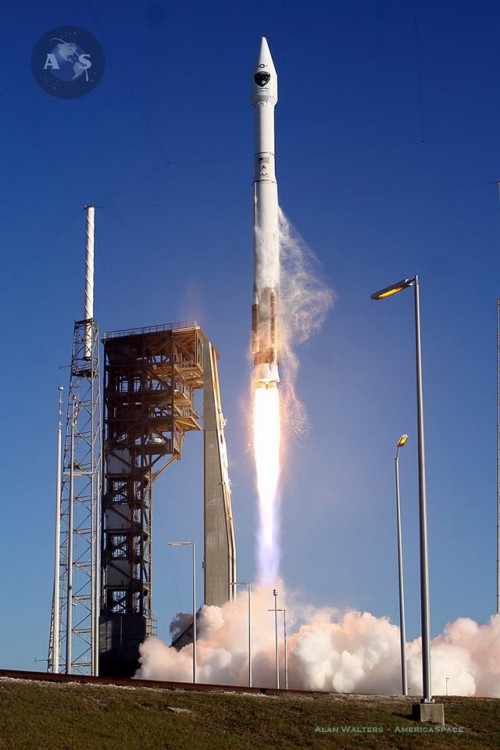
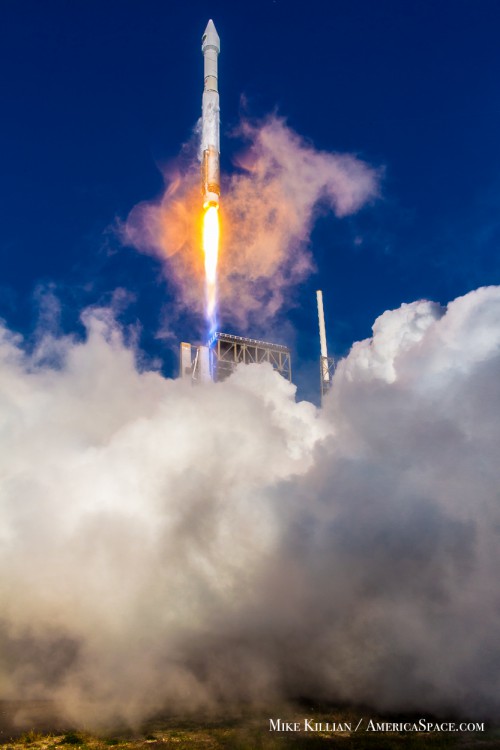
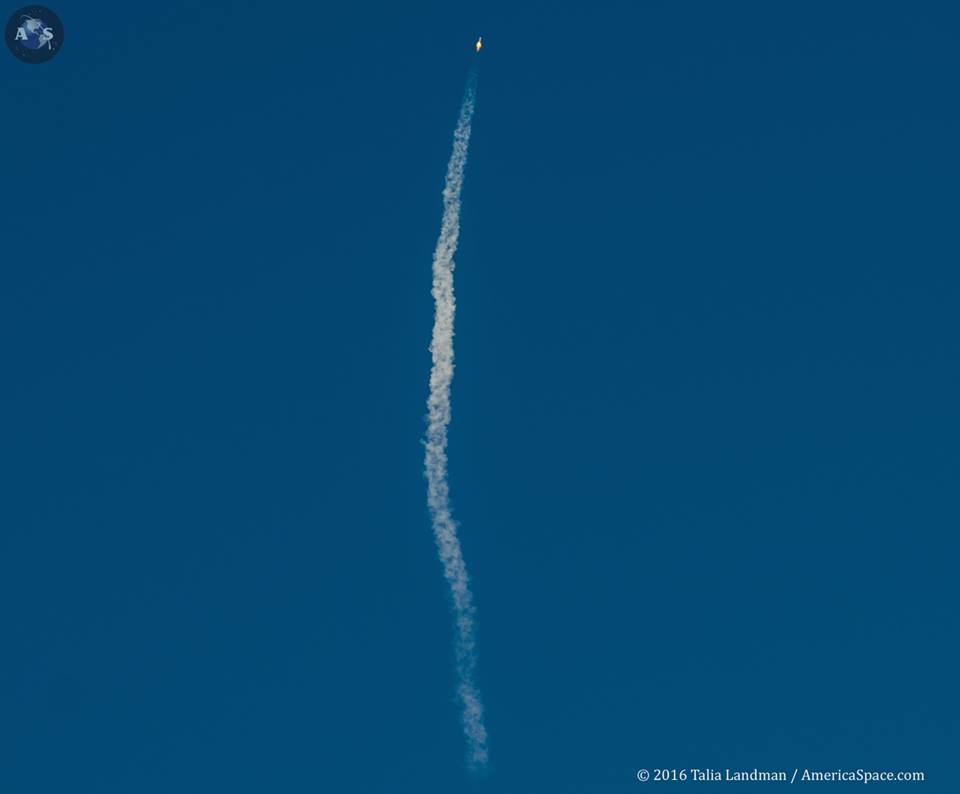
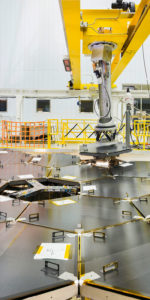

What a perfectly clear sky for great launch visibility today! Another perfect launch by ULA.
Very strange headline…by my count it could also have read 6 in 18 months or 8 in 24 months. Or any other combination. Why pick that?